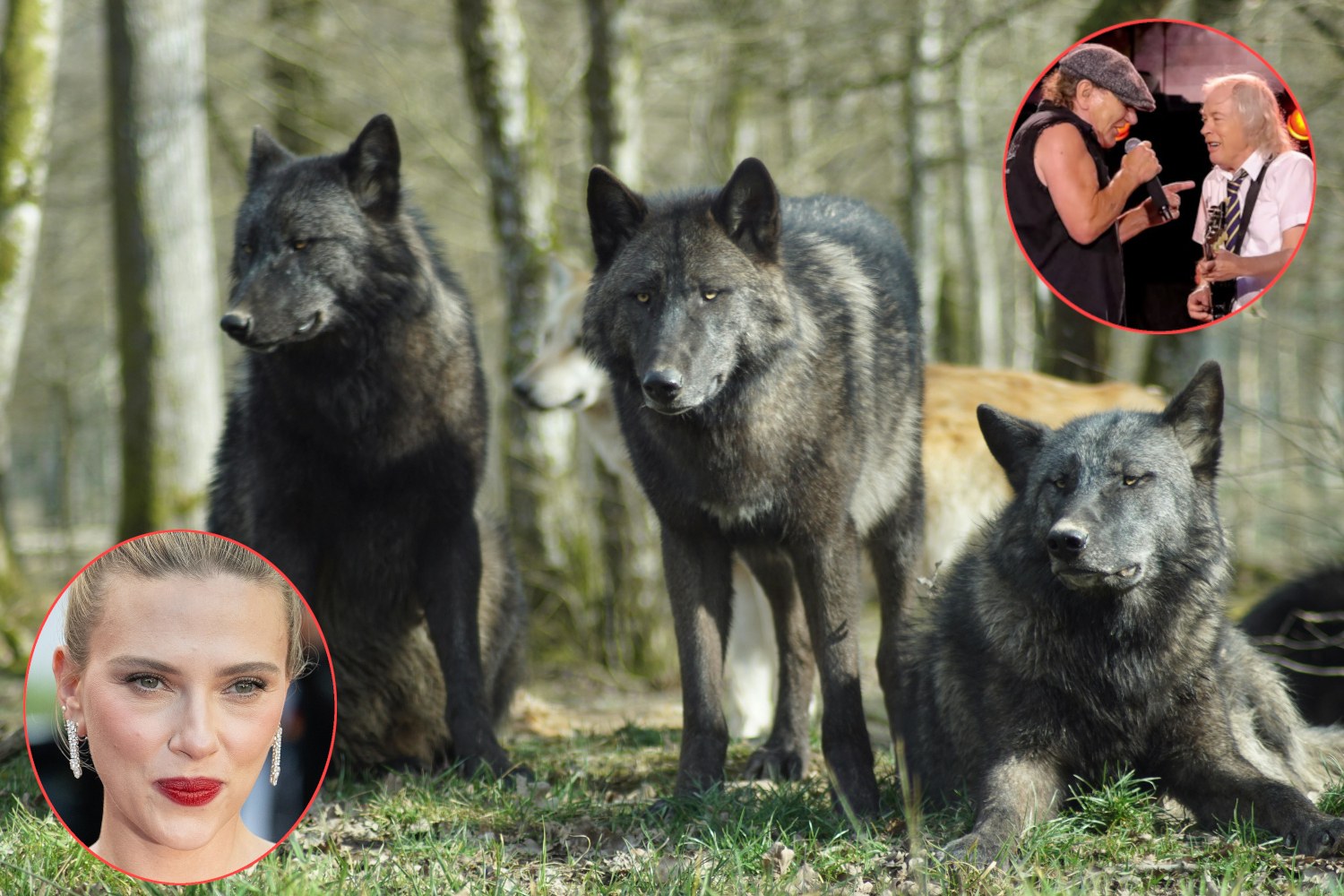Ranchers in Wyoming and Oregon are using Scarlett Johansson’s voice and AC/DC played from drones to scare wolves away, cutting livestock attacks dramatically.

@patrice schoefolt/Pexels @YantsImages/Wikipedia @acdc/Instagram
In the wide, open spaces of Wyoming and Oregon, ranchers are turning to an unexpected ally in the fight to protect their herds from gray wolf attacks: a combination of Scarlett Johansson’s voice and the pounding riffs of AC/DC. The idea might sound like the premise of a quirky indie film, but in reality it’s part of a serious attempt to defend cattle and sheep without resorting to lethal measures. Wolves, after all, remain a protected species.
Drones and strategic “noise”
The experiment involves drones flying over grazing lands while blasting two types of sounds. On one end of the spectrum, the raw energy of AC/DC tracks like Hell’s Bells echoes across the fields. On the other, clips from Marriage Story feature Scarlett Johansson in the midst of an emotionally charged argument.
Biologists say wolves appear to be particularly disturbed by the sound of heated human voices, interpreting them as a potential threat. “They don’t quite know what to make of it,” one researcher explained, noting that for predators who rely heavily on social cues, the unfamiliar tone is unsettling enough to make them retreat.
The effect on predation
What might sound gimmicky has shown strikingly effective results. During one monitoring period, wolf attacks on cattle dropped from 11 incidents in just 20 days to only 2 over 85 days. That’s not just a statistical blip — it translated into tangible economic relief for ranchers who previously lost double-digit numbers of animals in a single month. For families whose livelihoods depend on livestock, fewer attacks mean far more than peace of mind.
Why it works
Gray wolves are highly intelligent and socially sophisticated, yet they are not used to deciphering recorded human sounds. A furious shouting match or the relentless drive of rock music can feel, to them, like evidence of a hostile presence. Paul Wolf, a supervisor with the Oregon Department of Agriculture, put it bluntly: “The goal is to make wolves understand that this environment isn’t safe for them.”
A nonviolent form of coexistence
The approach underscores an important point: it is possible to protect both livestock and wildlife without relying on rifles or poisons. And beyond its practical benefits, the image itself is almost cinematic — Hollywood drama, hard rock thunder, and a touch of frontier ingenuity proving more effective than many traditional, far harsher tactics. Sometimes, it seems, survival depends on creativity as much as it does on force.
Source: Wall Street Journal
